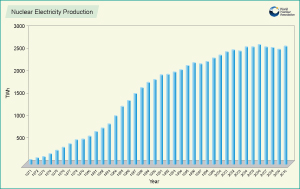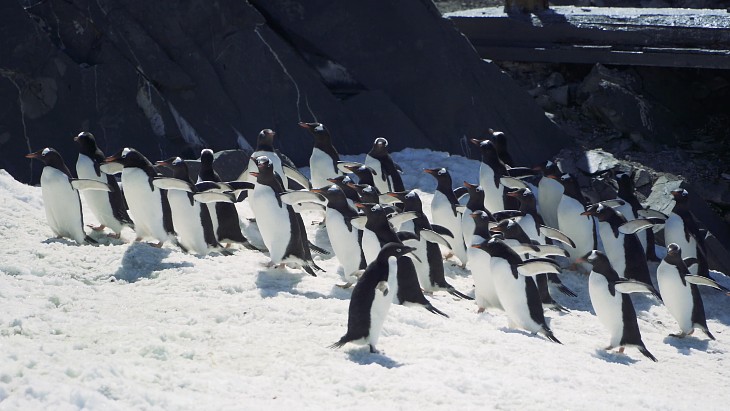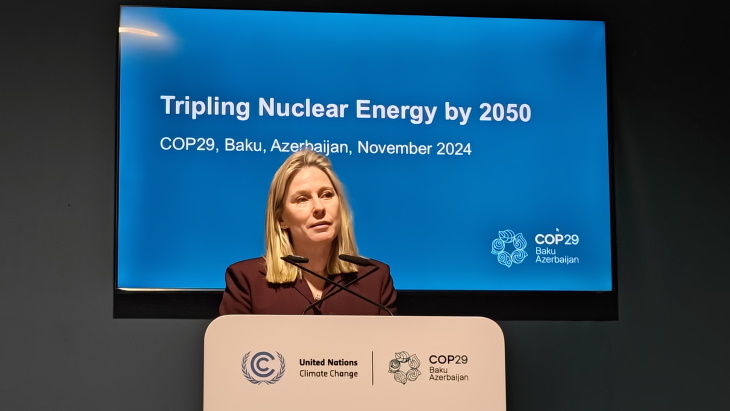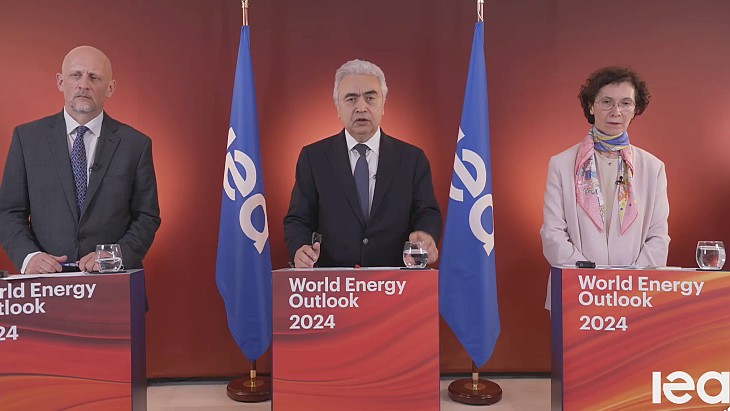Nuclear generation rise in 2010
 The total amount of electricity generated by nuclear powers plants around the world increased in 2010 following three consecutive years of decline. However, a sharp drop in output is foreseen for 2011 as a result of the Fukushima accident.
The total amount of electricity generated by nuclear powers plants around the world increased in 2010 following three consecutive years of decline. However, a sharp drop in output is foreseen for 2011 as a result of the Fukushima accident.
The total amount of electricity generated by nuclear powers plants around the world increased in 2010 following three consecutive years of decline. However, a sharp drop in output is foreseen for 2011 as a result of the Fukushima accident.
Global nuclear electricity generation in 2010 totalled 2630 TWh, according to figures from the International Atomic Energy Agency (IAEA), representing a 2.8% increase from the 2558 TWh generated in 2009 and taking it close to a peak value in 2006. The energy availability factor of the plants operating in 2010 was 81%, up from 79.4% in 2009.
New reactors amounting to 3722 MWe net boosted the 2010 figure, including Russia's Rostov 2, India's Rajasthan 6, China's Ling Ao 3 and Qinshan II-3, and South Korea's Shin Kori 1.
Just one small reactor - France's 130 MWe Phenix prototype fast reactor - was officially shut down in 2010, although the unit actually ceased power generation in 2009.
Construction of 16 new reactors, with a combined capacity of 15,846 MWe net, started in 2010, according to the IAEA. Ten of these are in China (Ningde units 3 and 4, Taishan 2, Changjiang 1 and 2, Haiyang 2, Fangchenggang 1 and 2, Yangjiang 3 and Fuqing 3). In Russia, the construction of two new units also began (Leningrad II unit 2 and Rostov 4), while two more started construction in India (Kakrapar 3 and 4). In Brazil, work also started on building the Angra 3 unit. Meanwhile, the stalled construction of Japan's 1383 MWe Ohma unit also got back underway in 2010 after re-engineering work for enhanced earthquake protection.
Assuming about five years for construction it can be expected that reactors will be coming online around 2012 at double today's rate of five per year, with this to rise to one per month around 2015.
Fukushima impact
Despite a return to form for nuclear power in 2010, the impact of the Fukushima accident, not only in Japan but around the world, will significantly reduce the amount of electricity generated by nuclear power plants in 2011.
According to data released by the Japan Atomic Industry Forum (JAIF), only 17 of Japan's 54 nuclear power reactors were in operation in mid-May. They represented around 15,500 MWe, or 31%, of the country's total nuclear generating capacity.
Thirteen units - with a combined capacity of 11,545 MWe (23.6% of total nuclear capacity) - have shut down as a direct result of the 11 March earthquake and tsunami. Units 1 to 4 at Fukushima Daiichi have been irreparably damaged and, together with the undamaged units 5 and 6, are to be decommissioned. Units 4 and 5 at the Hamaoka plant have been shut down at the government's request and are unlikely to restart for at least several months, while nine reactors - units 1 and 3 of the Onagawa plant, unit 2 of the Tokai plant, all four units at the Fukushima Daini plant - are in cold shutdown and it is not yet known when these will be allowed to resume operation.
A further 22 Japanese reactors are currently offline for inspections or equipment replacement, and will require local government approval to restart.
The accident resulted in Germany imposing a three-month moratorium on the operation of its oldest reactors. This was followed by a decision to permanently shut down the seven units that began operating in or before 1980, plus one reactor that has been in long-term shutdown. Between them these account for up to 55 TWh per year - enough to take 2% off 2010's generation figure.
Researched and written
by World Nuclear News

_99697.jpg)









_50521.jpg)

